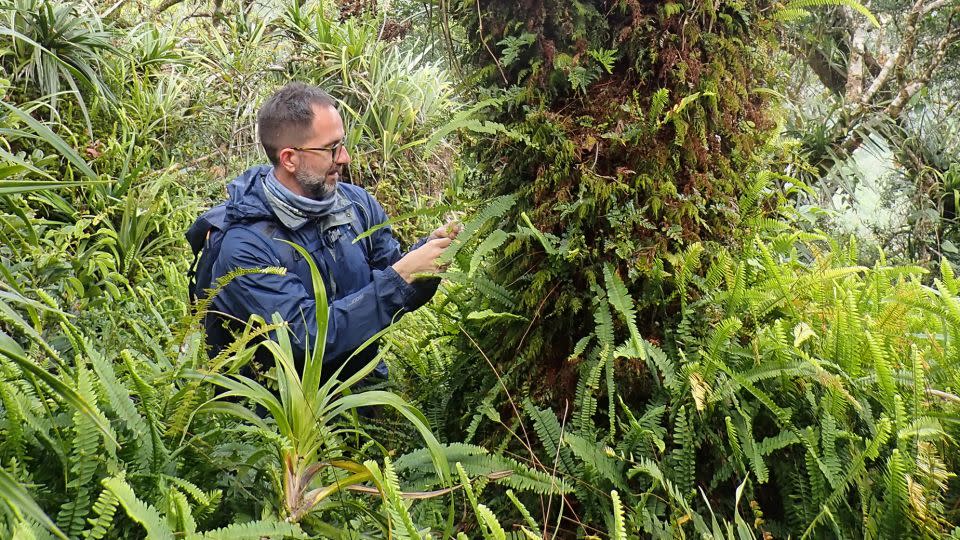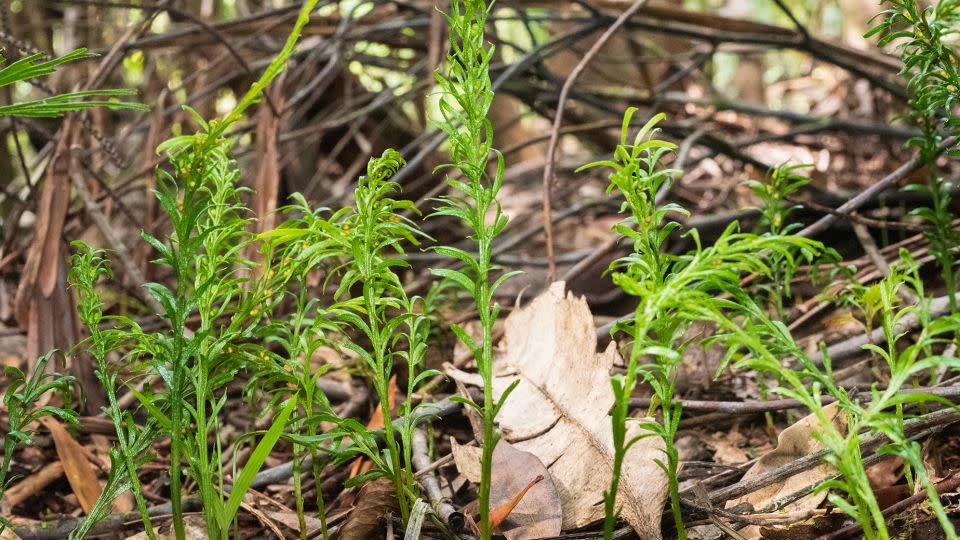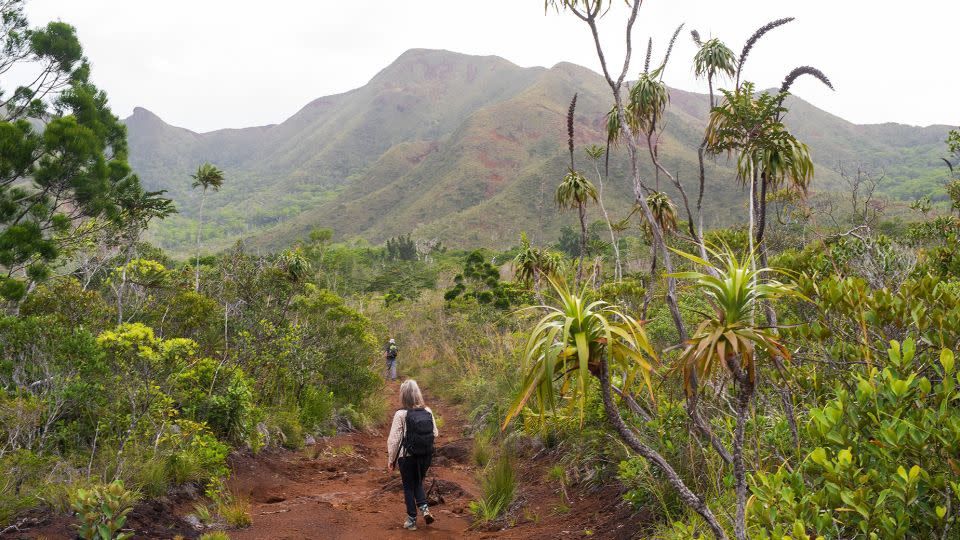Sign up for CNN’s Wonder Theory science newsletter. Explore the universe with news on exciting discoveries, scientific advances and more.
You wouldn’t know it by looking at them, but some plants have a lot more DNA than others. And perhaps even more baffling, some have far more than most animals – including humans. Now, scientists are uncovering more widespread examples of this giant-genome phenomenon even as its existence remains a mystery.
New research has identified the largest known genome of any living organism in a fern found in New Caledonia, an island chain in the South Pacific. The rare plant contains 160 billion base pairs, the paired units that make up DNA strands, according to the study. In comparison, the human genome is only 3 billion.
“Humble little things can hide one of the most amazing secrets inside,” said evolutionary biologist Jaume Pellicer, a researcher at the Barcelona Institute of Botany in Spain and corresponding author of the study published May 31 in the journal Cell.
Huge genomes are also rare. According to Pellicer, of the 12,000 or so documented plant genomes, all but a half dozen are at least an order of magnitude smaller than the fork fern, named Tmesipteris oblanceolata, described in the paper.
“The frontiers of biology are out there to be revealed,” Pellicer said. He should know – he keeps revealing it.
Prior to this study, the Paris japonica flower had the largest known genome of any fungus, plant or animal, with 149 billion base pairs (gigabase pairs, or Gbp).
Pellicer was part of the team that revealed the result of P. japonica in a study in September 2010. He also coauthored a paper in May 2017 hypothesizing why 150 Gbp could be the upper limit for genome sizes. Now, it has been proven wrong.
“The main interest of this project is not to find a record for genome size in plants, to be honest,” said Pellicer. “We want to investigate different cases of genomic gigantism.”

Ferns are known to have large repetitive genomes. After analyzing related samples from New Zealand and Tasmania, Pellicer came across the New Caledonian fern fork as a potentially interesting target for study.
In May 2023, he and his team collected samples of the declining plant in the wild and brought them back to the lab, where they compared the fern’s genome to species with known genome sizes.
The amount of DNA in the giant fern’s genome may be more than 50 times that of a human, but that doesn’t make the fern more complex or mean it has more genes. Only about 1% of their genome contains genes that encode for proteins, Pellicer estimated. The rest are non-functional repetitive sequences that have long been considered “junk DNA,” although scientists now know it’s not actually junk. A lot of that genetic gibberish can influence how genes function.
How the fern came up with so many base pairs is still an unsolved puzzle. What could be involved, according to Pellicer, is some combination of rampant polyploidy – or more than two sets of chromosomes, which is common in plants, though not in animals – and the accumulation of sequences Non-coding DNA that can replicate itself. and move around the genome.
“The more interesting question that the study basically can’t get at is why (the genome) gets so big, and how ferns, specifically, are able to deal with the consequences of having such a large genome. that’s unnecessary,” said Fern. expert Eric Schuettpelz, research botanist and curator in the botany department of the Smithsonian Institution. He did not collaborate on this research. “It seems that ferns are very bad at getting rid of the repetitive DNA and extra chromosomes.”


Genome size is not an advantage, as it turns out. Genome gigantism, or genome obesity, is extremely inefficient, the experts explain. It takes a lot of energy and nutrients to make that much DNA. Most plants have much smaller genomes, which allows them to reproduce faster, produce more offspring and adapt more quickly to the environment. After copying such a large amount of genetic material every time a cell divides, “it’s just crazy,” Schuettpelz said.
How plants with such unwieldy genomes can persist is a mystery, said David Baum, a professor of botany at the University of Wisconsin-Madison who was not involved in the study.


Pellicer and his colleagues believe that genome size may influence a plant’s chance of extinction. The team is currently focused on research that suggests plant species with large genomes are over-represented on the International Union for Conservation of Nature’s Red List of threatened flora and analyzing whether genome size might help to identify potentially threatened plant guardians.
Could there be a plant with an even bigger genome than the fork fern? Maybe.
“I’m not going to play with biological limits anymore,” Pellicer said. “They are meant to be broken.”
Amanda Schupak is a science and health journalist in New York City.
For more CNN news and newsletters create an account at CNN.com